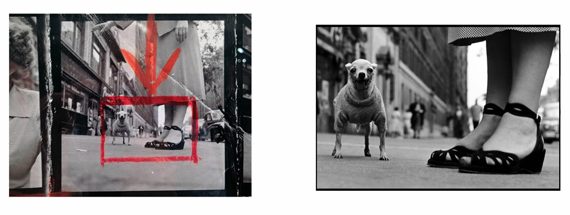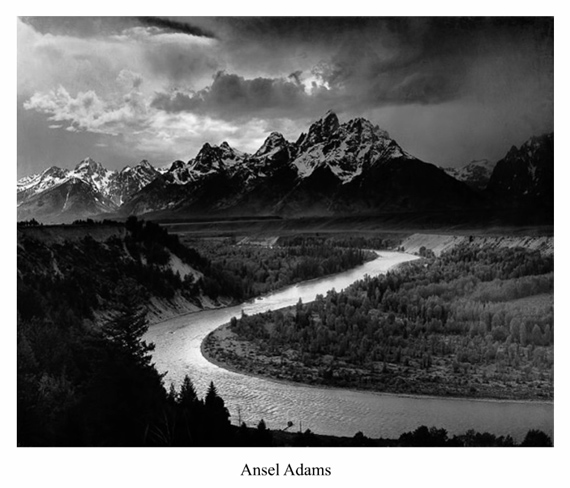In today’s world of digital photography, editing has become an essential part of the workflow. It’s almost like your photography process is incomplete without it. Then there’s another school of thought that says editing is cheating. So, does editing images kill the art of photography? Photographer Sean Tucker talks in depth about this interesting topic:

“Since the dawn of photography, photographers have been editing their images right from the beginning.”
What you need to understand is that it’s not only the digital photos that have been subjected to editing. Photographers who took their images in film also used to edit their images to their taste. General editing techniques involved cropping, dodging and burning, retouching and object removal. And what’s interesting is that even the most famous photographers in the history of photography used to do it. Editing is thus more of an art in itself and shouldn’t automatically be considered a bad thing.
Cropping
Cropping your images is like changing your composition after the image has been taken. But it is by no means cheating. In fact, cropping an image lets the viewers see more of the important bits. Think of cropping like refining a composition in post.
For instance the famous image below by Elliot Erwitt is a great example of how he made the image more interesting by cropping it.
And cropping is not just for street photographers who have no control over the arrangements of the elements in the image. It can be equally important in other genres as well.
Dodge and Burn
Techniques like dodging and burning are a convenient way to draw the viewers’ attention by shaping light. By using the dodge technique, you can highlight the important bits to draw in more attention. On the contrary, the burn technique allows you to darken the distracting bits, or create a sense of mystery and drama in the image.
“Ansel Adams reportedly dodged and burnt his prints sometimes 30 or 40 times before he got one that he was happy with.”
Dodging and burning allows you to create an image that really pops out. It may not be an actual visual representation of the scene, but it sure does come in handy for creating fine art.
This technique is not just limited to landscape photographers. Street photographers can make use of this technique too.
Retouching
Surely, you too must have come across people who complain that nothing that you see in the fashion industry can be trusted. The notion behind it being the level of retouching that goes behind the images. But, retouching is not something that you can associate solely with Photoshop. In fact, it has been around since the early beginning of photography.
“Since people where shooting portraits on cameras, those images would be printed from the negative on to the print and some would often go to work to tidy their prints up and make it look better.”
It’s not wrong to beautify the images that we have taken in camera to make the person appear better. This has been around from the beginning, and you cannot blame digital photography for retouching process. When retouching, a good idea is to not to get rid of something that’s unique to that person. For instance, a birthmark or a mole should stay, while pimples can be removed. Similarly, refrain from changing the proportions of someone’s face or body. This means avoiding changing the size of the eyes, nose, lips, and body shape.
Object Removal
Some tools in Photoshop like the healing brush tool, or the clone stamp tool can be used to remove objects from the final image. You can use it to get rid of things that you believe don’t belong in the frame. But again, is digital photography to blame for this “trickery”? Not at all. Photographers in the analog days used to do it too.
Ethical Dilemma in Editing
When it comes to ethics in editing, it is quite subjective. You need to determine for yourself how much or little you want to edit your images. But, when it comes to documentation, like in the case of journalism, you should be able to assume that the images aren’t heavily edited – or manipulated to be precise. Exposure adjustment is fine in that case, but you can’t manipulate any other elements.
“If you are a professional journalist, you know exactly how far you’re allowed to take an edit.”
Therefore, apart from journalism, you can decide for yourself on how far you want to take your edits. But, it’s no fair to strictly term editing as unethical or cheating. Instead, think of editing as an ingredient to take the image recorded by the camera and escalate it to the vision you have for that particular image.
And if you edit your images, just don’t lie about it. Be open about the edits you have made. If you are not willing to discuss the process, just let those who ask know that it’s your method and that you don’t want to talk about it. Otherwise, be open and let them know the edits you have made. Just don’t pretend that you haven’t edited the image. That becomes a lie.
Like This Article?
Don't Miss The Next One!
Join over 100,000 photographers of all experience levels who receive our free photography tips and articles to stay current:








Leave a Reply